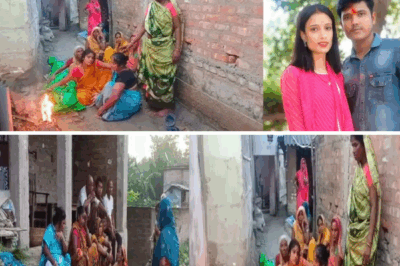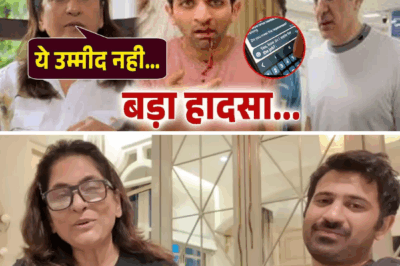Modi Government Overhauls Mughal History in Indian School Textbooks
New Delhi: A significant transformation is underway in the way Indian students learn about the Mughal era. The Modi government is actively revising national history textbooks, aiming to present what it calls the “true face” of Mughal rulers—moving away from narratives that have long depicted them as benevolent and tolerant monarchs.
A Shift in Perspective
In the new edition of the class 8 Social Science textbook, Exploring Society: India and Beyond, stark changes are visible. On page 36, emperor Babur, the founder of the Mughal empire in India, is described as a “barbaric Turkic-Mongol ruler and military strategist who fled from Samarkand and invaded India.” The textbook details how Babur defeated Ibrahim Lodi in 1526 at the First Battle of Panipat to capture Delhi. Unlike earlier textbooks, the new curriculum emphasizes Babur’s cruelty, noting he “massacred entire populations, enslaved women and children, created piles of skeletons—and took pride in these atrocities.”
This marks a sea change from earlier versions of the NCERT textbooks, which described Babur as a charismatic, courageous, and cultured leader. Previous editions highlighted his love for art, literature, and architecture, painting him as a symbol of a new awakening in India.
Honest History or Selective Storytelling?
Supporters of the changes argue that, until now, the “true nature of Mughal rule” was hidden behind one-sided glorification, and indigenous heroes were sidelined. The present government insists that students should be taught both the achievements and the brutality of Mughal rulers such as Babur, Akbar, and Aurangzeb.
For example, Akbar—previously lauded as “the Great,” and depicted as a model of tolerance—is now shown in a more nuanced light. The new textbooks recount his acts of religious intolerance and violence, like the massacre of 3,000 civilians at Chittor Fort in 1568 and his orders to enslave surviving women and children. The books even quote Akbar’s own letters bragging about “establishing Islam by destroying non-believers’ temples and cities.”
The government claims that the previous one-sided portrayal denied the young generation the full picture, emphasizing that new students should judge for themselves who deserves to be called “great.”
Revisiting Aurangzeb’s Legacy
The most controversial figure, Aurangzeb, also gets a complete re-examination. While older textbooks suggested he protected temples and granted subsidies for political reasons, new chapters highlight his harsh religious policies. They detail his destruction of temples and gurdwaras in Varanasi, Mathura, Somnath, and elsewhere, the ordering of many forced conversions, and his imprisonment of family members, such as his own father Shah Jahan and the assassination of his brother Dara Shikoh.
These new narratives are being fiercely debated in public and political circles. Supporters argue that the full, unfiltered history must finally be shown, while critics accuse the government of communalizing history and cherry-picking facts to fit a current ideological agenda.
Public and Political Reactions
The opposition Congress party and some historians allege this move is part of a broader “saffronization” or “Hindutva” agenda—using history for political gain. Former Chief Minister Harish Rawat warned, “There should be no one-sidedness. Good teachings from all faiths should be included in our curriculum. If changes are made solely for religious or political motives, it will harm the nation’s education system.”
On the other hand, supporters of the reforms assert that for decades, textbooks highlighted only Mughal achievements while marginalizing heroic Hindu kings such as the Cholas, Chhatrapati Shivaji Maharaj, Rana Sanga, and Maharana Pratap. A 2021 report by the Public Policy Research Center noted that NCERT books had dozens of references to Akbar and his descendants, but just a handful for great Hindu rulers.
Even some Indian Muslims, interviewed by local TV channels, acknowledged the Mughals’ cruelty, stating that Mughal rule should not be romanticized, and that new generations deserve to know the full story.
Sanskrit Epics Enter the Curriculum
Alongside these changes, the Uttarakhand state government is preparing to introduce readings from the Bhagavad Gita and Ramayana in 17,000 public schools. While supporters claim that imparting spiritual and ethical teachings is vital for children’s overall development, critics say this is further evidence of political interference in education.
Looking Ahead
The battle for the past is clearly not just academic; it is shaping present-day political discourse and the very identity of future generations. Whether the rewriting of textbooks will lead to a more honest understanding of India’s history—or deepen divisions—remains to be seen.
News
Ghost Teachers and Shuttered Schools: MP Education Scandal Exposed
Ghost Teachers and Shuttered Schools: MP Education Scandal Exposed Narsinghpur, Madhya Pradesh: Alarming revelations from Narsinghpur district have brought to…
Fierce Debate Erupts Over Changes in NCERT’s Class 8 Social Science Textbooks
Fierce Debate Erupts Over Changes in NCERT’s Class 8 Social Science Textbooks New Delhi: The National Council of Educational Research…
Bageshwar Baba Takes London by Storm: Hanuman Chalisa Resonates in British Parliament
Bageshwar Baba Takes London by Storm: Hanuman Chalisa Resonates in British Parliament Bageshwar Baba, also known as Pandit Dhirendra Krishna…
Tragic Murder in Madhubani: Father K*lled Over Love Marriage
Tragic Murder in Madhubani: Father K*lled Over Love Marriage Pandol, Madhubani: A youth’s decision for a love marriage proved to…
Archana Puran Singh’s son met with a serious accident, Parmeet furious and furious with anger.
Archana Puran Singh’s son met with a serious accident, Parmeet furious and furious with anger. Singh Faces a Major Scam…
A major update in the Raghuvanshi case: Raja’s mother, Uma Raghuvanshi, hospitalized after her condition deteriorates.
A major update in the Raghuvanshi case: Raja’s mother, Uma Raghuvanshi, hospitalized after her condition deteriorates. Grief and Shock: Uma…
End of content
No more pages to load









